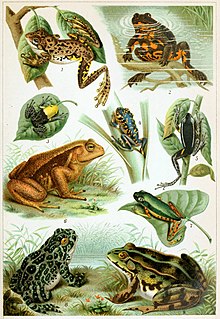Eisentraut's pipistrelle is a species of vesper bat in the family Vespertilionidae.
It is found in Cameroon, Democratic Republic of the Congo, Kenya, Somalia, and Uganda.
Its natural habitats are subtropical or tropical dry forest, subtropical or tropical moist lowland forest, subtropical or tropical mangrove forest, and subtropical or tropical moist montane forest.

The singing quail is a species of bird in the family Odontophoridae. It is found in Belize, El Salvador, Guatemala, Honduras, and Mexico. Its natural habitats are subtropical or tropical dry forest, subtropical or tropical moist lowland forest, and subtropical or tropical moist montane forest.
Platypelis alticola is a species of frog in the family Microhylidae.
It is endemic to Madagascar.
Its natural habitat is subtropical or tropical moist montane forests.
It is threatened by habitat loss.

Platypelis barbouri is a species of frog in the family Microhylidae.
It is endemic to Madagascar.
Its natural habitats are subtropical or tropical moist lowland forests, subtropical or tropical moist montane forests, and heavily degraded former forest.
It is threatened by habitat loss.
Platypelis cowanii is a species of frog in the family Microhylidae.
It is endemic to Madagascar.
Its natural habitat is subtropical or tropical moist montane forests.
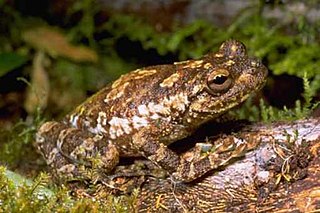
Platypelis grandis is a species of frog in the family Microhylidae.
It is endemic to Madagascar.
Its natural habitats are subtropical or tropical moist lowland forests and subtropical or tropical moist montane forests.
It is threatened by habitat loss. Juveniles are recognizable by the green protuberances on their body, which help them camouflage and hunt. When mature, coloring is brown and green. Insects make up the bulk of their diet.
Platypelis milloti is a species of frog in the family Microhylidae.
It is endemic to Madagascar.
Its natural habitat is subtropical or tropical moist lowland forests.
It is threatened by habitat loss.

Platypelis tetra is a species of frog in the family Microhylidae.
It is endemic to Madagascar.
Its natural habitats are subtropical or tropical moist lowland forests, subtropical or tropical moist montane forests, and heavily degraded former forest.
It is threatened by habitat loss.
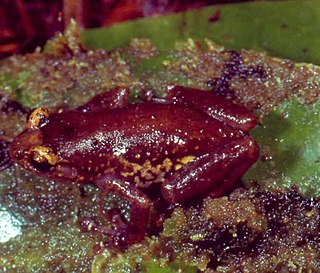
Platypelis tsaratananaensis is a species of frog in the family Microhylidae.

Platypelis tuberifera is a species of frog in the family Microhylidae.
It is endemic to Madagascar.
Its natural habitats are subtropical or tropical moist lowland forests, subtropical or tropical moist montane forests, and heavily degraded former forest.
It is threatened by habitat loss.
Ptychadena neumanni is a species of frog in the Ptychadenidae family.
It is endemic to Ethiopia.
The white-fronted ground dove, or Caroline Islands ground dove is a species of bird in the family Columbidae.
It is endemic to Micronesia.

Hombron's kingfisher or the blue-capped kingfisher is a species of bird in the family Alcedinidae endemic to the Philippines. Its natural habitats are subtropical or tropical moist lowland forest and subtropical or tropical moist montane forests. It is threatened by habitat loss.
The Peruvian martin is a species of bird in the family Hirundinidae. It is found in Peru and far norther Chile.
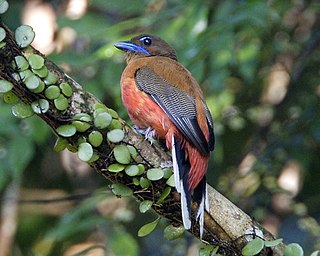
The scarlet-rumped trogon is a species of bird in the family Trogonidae.
It is found in Brunei, Indonesia, Malaysia, Myanmar, and Thailand.
Its natural habitats are subtropical or tropical moist lowland forest, subtropical or tropical swamps, and subtropical or tropical moist montane forest.
It is threatened by habitat loss.

The African giant shrew is a species of shrew. It is also known as Olivier's shrew. It is native to Africa, where it is widespread and occurs in many types of habitat. It is found near human habitation, where it is considered to be a pest species. Its natural habitats are subtropical or tropical dry forest, subtropical or tropical moist lowland forest, subtropical or tropical moist montane forest, dry savanna, moist savanna, arable land, rural gardens, urban areas, and heavily degraded former forest.
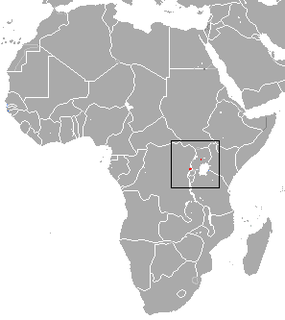
The tarella shrew is a species of mammal in the family Soricidae. It is found in Democratic Republic of the Congo and Uganda. Its natural habitats are subtropical or tropical moist lowland forest and subtropical or tropical moist montane forest. It is threatened by habitat loss.

The greater large-headed shrew is a species of mammal in the family Soricidae. It is found in Burundi, Democratic Republic of the Congo, Rwanda, and Uganda. Its natural habitats are subtropical or tropical moist lowland forest, subtropical or tropical moist montane forest, and swamps. It is threatened by habitat loss.

Johnston's forest shrew is a species of mammal in the family Soricidae found in Burundi, Cameroon, the Central African Republic, the Republic of the Congo, the Democratic Republic of the Congo, Equatorial Guinea, Gabon, Rwanda, Tanzania, and Uganda. Its natural habitats are subtropical or tropical moist lowland forest and subtropical or tropical moist montane forest. It is threatened by habitat loss.

The lesser Angolan epauletted fruit bat is a species of megabat in the family Pteropodidae. It is found in Angola and Republic of the Congo. Its natural habitats are subtropical or tropical dry forest, subtropical or tropical moist lowland forest, dry savanna, and moist savanna. It is threatened by habitat loss.

